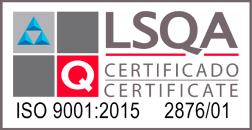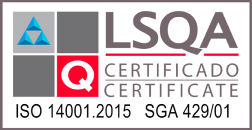Air quality is an issue of great importance worldwide. Air pollution affects human health and the environment, and is one of the main global environmental problems. Air quality is affected by a variety of factors, including the emission of polluting gases by vehicles, thermal power plants and industry, as well as deforestation and the burning of fossil fuels. Air pollution can cause serious respiratory problems, such as asthma and bronchitis, and can also increase the risk of cardiovascular disease and cancer. In addition, air pollution can have a negative impact on the environment, including soil and water acidification, biodiversity loss, and climate change.
Despite these challenges, there is much that can be done to improve air quality. On an individual level, people can take simple steps to reduce their carbon footprint and contribute to better air quality, such as switching to more energy-efficient modes of transport, using renewable energy at home, and supporting more sustainable environmental policies. At the government level, stricter policies and regulations can be implemented to control greenhouse gas emissions and encourage the use of cleaner and more efficient technologies. In addition, initiatives that promote biodiversity conservation and reforestation, help reduce air pollution and mitigate its effects, can be promoted.
Is the number of monitoring stations that exist in Chile today enough?
In relation to the sufficiency of air quality monitoring networks in Chile, it is important to highlight that having a clear and precise view of pollutant concentration levels is essential to adequately address problems related to air pollution. In the case of Chile, monitoring networks such as SINCA and INIA are a valuable tool to measure and monitor air quality in the country.
However, it is necessary to keep in mind that air quality varies by region and geographical location, and that the current quantity and distribution of monitoring stations may not be adequate to cover all areas and capture all pollution levels. In addition, although monitoring networks are a valuable tool for measuring air quality, it is important to note that the data collected may be subject to technical and human limitations, and that there may be uncertainty as to the accuracy and reliability of the data. In summary, although air quality monitoring networks in Chile are a valuable tool for measuring and monitoring air quality, these may not be sufficient to provide a complete and detailed picture of pollution levels across the country. It is therefore important to continue investing in more advanced and comprehensive monitoring technologies and networks to improve monitoring capacity and prevent the negative effects of air pollution.
In the following figures, it is indicated that the number of SINCA stations are 220, distributed throughout the country. Meteorological parameters such as air quality are measured.


Determining the appropriate number of air quality monitoring stations in Chile depends on several factors, including pollution levels and population density. As for pollution levels, it is important to note that air quality varies by region and geographical location, and that it is necessary to have a sufficient number of monitoring stations to cover all areas and capture all pollution levels. With regard to population density, it is important to note that the number of monitoring stations should also be based on the number of people exposed to pollutants and the potential impact of air pollution on the health of the population. In general, a combination of both factors is recommended to determine the appropriate number of monitoring stations. For example, a greater number of stations could be considered in areas with high levels of pollution and a high population density, while in areas with low levels of pollution and a low population density a smaller number of stations could be considered. In any case, it is important to continue to regularly monitor and evaluate the effectiveness of monitoring networks and adjust them as necessary to ensure adequate coverage and accuracy.











